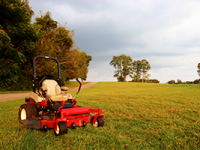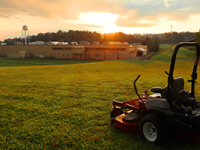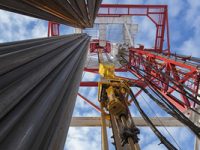Ten Dos and Don’ts of Applying Variable Speed Drives to Hydraulic Pumps
 Inefficient energy allocation, heat generation and noise are typical concerns among facility engineers in manufacturing environments. Parker’s new variable speed drive solution, called Drive Controlled Pump (DCP), increases hydraulic power unit efficiency while maintaining high power density, precise control and performance. DCP is the pairing of electric motors, hydraulic pumps, electronic drives and software to meet the local load demands within your hydraulic system. Precisely controlled variable speed pump macros are custom configured to meet the functional requirements of each process within a complex hydraulic system.
Inefficient energy allocation, heat generation and noise are typical concerns among facility engineers in manufacturing environments. Parker’s new variable speed drive solution, called Drive Controlled Pump (DCP), increases hydraulic power unit efficiency while maintaining high power density, precise control and performance. DCP is the pairing of electric motors, hydraulic pumps, electronic drives and software to meet the local load demands within your hydraulic system. Precisely controlled variable speed pump macros are custom configured to meet the functional requirements of each process within a complex hydraulic system.
Here is a list of ten dos and don’ts when implementing DCP technology:
1. Right math matters.
Don’t just use the Hydraulic Power Equation to size the electric motor.
(HP = P x Q ÷ 1714)
Do compute the pump torque first, then use the motor’s base speed to compute power.
(T = Vi x P ÷ 24π)
(HP = T x N ÷ 5252). HP: Horse Power, P: Pressure PSI, Q: Flow GPM, T: Torque Ft-Lb, Vi: Pump Displacement In³/Rev, N: motor base speed (4 pole motor’s base speed = 1,800 RPM).
2. Pump losses matter.
Don’t just use load’s flow and pressure demand to compute motor power.
Do consider the pump’s internal flow and torque losses at various speeds and pressures.
3. Power to accelerate flow matters.
Don’t be content with power computations to maintain flow and pressure.
Do allow for the acceleration power requirement. Variable speed pump controls need reserved power to accelerate the combination of the electric motor rotor, couplings and the pump’s rotating group while under full pressure. The reserved power gets larger with the acceleration rate and rotor moment of inertia.
Ta = I x Δω / (308 x Δt), Ta: Acceleration Torque(Ft-Lb), I moment of inertia (LB-Ft2), Δω: Speed Change (RPM), Δt: Speed Change (Sec)
Don’t oversize the electric motor. Oversized motors have larger rotor inertia and require larger drives to power.
Do break down the cycle by pressure, flow and time. Compute each segment for power.
5. Maximum pressure and flow matters.
Don’t just use maximum flow and maximum pressure to compute power. You might end up with an oversized motor.
Do use the larger of the two computed horsepower values. Compare flow at maximum pressure and pressure at maximum flow.
6. Hydraulic peak power matters.
Don’t just use the RMS value of computed power segments to size the electric motor.
Do use the RMS value, yet pay attention to peak power. Peak power should be less than 150% of the selected motor size, and its duty cycle must be within the operation parameters of the electric motor and drive.
7. Electric motor frame size matters.
Don’t use your standard TENV electric motor for variable speed fixed pumps.
Do use low rotor inertia motors to minimize reserve acceleration power. Open frame and force ventilated motors offer much lower rotor inertia.
8. Electric motor base speed matters.
Don’t exceed the induction motor’s base frequency when operating at maximum pressure.
Do exceed motor’s base frequency only when pressure drops proportional to over-speed.
9. Pump minimum speed matters.
Don’t operate below the minimum recommended pump speed. Operating below minimum speed damages the pump.
Do add a controlled bleed off loop to the pump’s outlet to limit its minimum speed. Also, an accumulator can allow the pump to get turned off at deadhead conditions.
10. Flow change rate matters.
Don’t accelerate/decelerate a pump too fast.
Do limit the pump speed change rate to stay above the pump’s minimum inlet pressure to avoid cavitation. Also, keep in mind rapid pump speed changes consume additional power which can lower the HPU’s efficiency.
To learn more about Drive Controlled Pump (DCP) Technology, download the white paper, Integrated Energy-Saving Hydraulic Systems Customized to Your Application Requirements here or view the on-demand presentation.

Rashid S. Aidun who draws on his electrical and fluid power background to create custom drive controlled pump solutions. Prior to joining Parker 17 years ago, he worked as an industrial manufacturing and fluid power and controls engineer for various OEMs. He has a BSME from Syracuse University.
Improve Steel Coiling Process Efficiency With DCP
Energy-Saving Hydraulic Systems Using Drive Controlled Pump (DCP)
Source: Parker Feed








